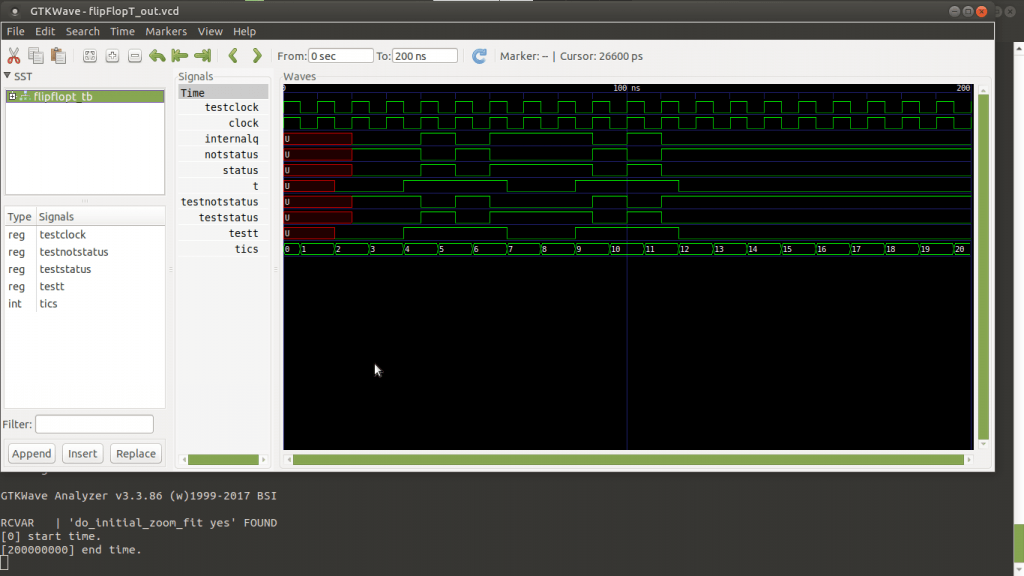
El flip flop T, es el biestable Toggle, que cambia en inglés. Este es un code-kata con el código fuente en VHDL de este biestable. Simplemente es un dispositivo que almacena memoria de un estado.
Recibe 2 entradas, una señal de reloj, y la entrada T. Entonces, simplemente si la señal T está activa a 1, entonces con el tic tac del reloj va cambiando las salidas. En las salidas sólo tiene 2 pines, que son el estado actual, y el estado actual negado.
Este es otro de los biestables de la familia ampliamente utilizados en electrónica para almacenar en memoria cierta información: el flip flop SR, el T, el D o el JK son los más conocidos. Al grano..
El código fuente del flip flop T
library IEEE;
use IEEE.std_logic_1164.all;
entity flipFlopT is
port (
status, notStatus : out std_logic;
clock, t : in std_logic
);
end entity;
architecture arch_flipFlopT of flipFlopT is
signal internalQ : std_logic;
begin
status <= internalQ;
notStatus <= not internalQ;
main_process : process (clock)
begin
if rising_edge (clock) then
report "Procesando tic tac.. clock=" & std_logic'image(clock);
report " t=" & std_logic'image(t);
if internalQ = 'U' then
internalQ <= t;
else
if t = '1' then
internalQ <= not internalQ;
else
internalQ <= internalQ;
end if;
end if;
end if;
report " internalQ=" & std_logic'image(internalQ);
end process;
end architecture;El código fuente del banco de pruebas para el flip flop T
library IEEE;
use IEEE.std_logic_1164.all;
entity flipFlopT_tb is
end entity;
architecture arch_flipFlopT_tb of flipFlopT_tb is
component flipFlopT is
port (
status, notStatus : out std_logic;
clock, t : in std_logic
);
end component;
signal testStatus, testNotStatus, testT : std_logic;
signal testClock : std_logic := '0';
signal tics : integer := 0;
begin
testing_unit: flipFlopT port map (
status => testStatus,
notStatus => testNotStatus,
clock => testClock,
t => testT
);
generate_100Mhzs_clock : process
begin
report "Tic tac.. testClock=" & std_logic'image(testClock);
testClock <= not testClock;
if testClock = '1' then tics <= tics + 1; end if;
if tics >= 20 then wait; end if;
wait for 5 ns; -- Tiempo de espera en un flanco de reloj.
end process;
main_process : process
begin
wait for 15 ns;
testT <= '0'; wait for 20 ns;
testT <= '1'; wait for 30 ns;
testT <= '0'; wait for 20 ns;
testT <= '1'; wait for 30 ns;
testT <= '0';
wait;
end process;
end architecture;Si todo va bien, al simularlo tiene que verse un gráfico como el del principo del post.





